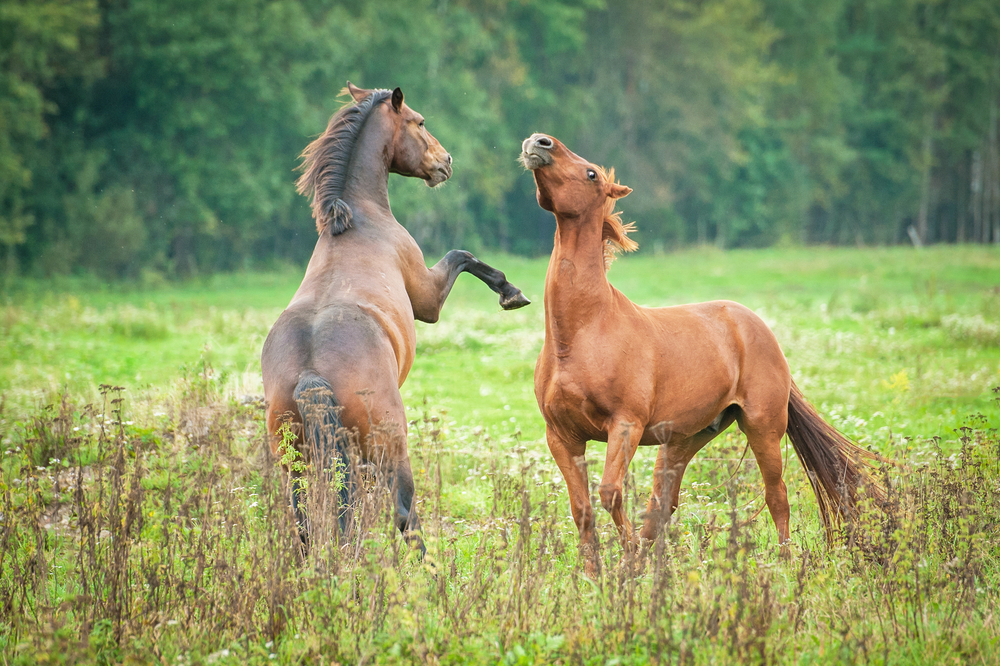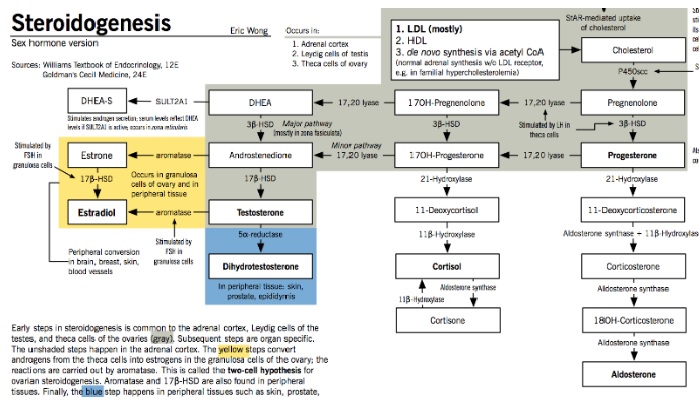
Mares (mostly) and Hormones
Tuesdays with Tony
There’s a thing here at the clinic called Regumate. It gets talked about a lot. Some talk of it in hushed tones as if its very mention can bring forth chestnut mare syndrome. My Docs tend to talk about it as a tool, usually during breeding season. This week, let’s explore the weird and wacky world of hormones, and the crazy things they do to mares and stallions.
One Hormone to Rule Them
It all starts in the brain for both males and females. I realize many of you may question if anything for males, particularly young males of any species, starts in the brain, but trust this cat. It does. In the brain there’s a hormone called gonadotropin-releasing hormone. We’re gonna go with GnRH because that’s a lot to type with only two paws. GnRH sends signals to the rest of the body to tell it to make more hormones like testosterone and estrogen. (If you are a hormone researcher, I ask you to give a cat a break. Yes, I know I’m simplifying things, it’s what I do. Back to the blog.)
GnRH levels are strongly affected by daylight length. This is why mares are generally more mare-y and stallions are more stallion-y during the longer days of late spring, summer, and early fall. It’s a brilliantly designed system to ensure most reproduction happens during a season which will produce babies when there’s food. The same system is tweaked based on gestation length for other species. For example, goats and sheep experience these effects in the fall so they have babies in the spring. That Mother Nature is a smart cookie!
Moving Down the Body
So GnRH got released in the brain and did some stuff. What exactly is that stuff? GnRH hits the ovaries in mares, and the testes in stallions to cause them to crank up the pathways that turn cholesterol (yes, cholesterol) into estrogen and testosterone. But wait! This happens in a few other places as well. The skin and adrenal glands can also make estrogen and testosterone. This is important to understand when it comes to removing the ovaries and testicles. The moral of this story is that, sure, ovaries and testes do the heavy lifting of hormone production, but they aren’t the only ones to do it.

Estrogen and testosterone get blamed for a lot of things in the world. Some of it’s valid, but these hormones do a lot of other things besides rev up the libido. In males and females, estrogens help manage the metabolism, prevent bone loss, and protect blood vessels from damage. Testosterone is important for muscle metabolism, and red blood cell formation. Testosterone is also an important source of estrogen, particularly in males. This seems backward at first read. However, the body takes testosterone, turns it into estrogen, that estrogen then signals things like bone to get stronger. Most of this happens on the spot, which keeps those estrogens from sending bodywide signals. It only affects the things that need affecting.
Hormones and Behavior
Estrogen and testosterone also drive some behaviors to occur, and here’s where we get back to where it all started, Regumate. These hormones drive mating behavior, which isn’t always conducive to good horse riding behavior. Being smart humans, you’ve found that by increasing the progesterone in the system, you can make these behaviors calm down a bit. Progesterone is a hormone most often associated with pregnancy. It does have high levels there, but it’s also around most of the time in males and females doing various progesterone things. One of the big things it does is reduce estrogen receptors. And Regumate is a synthetic progesterone, which means Regumate reduces estrogen receptors. Surely if there’s less estrogen receptors, your mare will be more focused on your riding goals than finding the closest eligible bachelor, right? Meh, maybe.

Does anything about this look straightforward and simple? This diagram is the simplified version of how all these hormones get created. This means something like Regumate might help you get through some tough days with your mare. However, it also means there’s a lot of things to factor in, and there’s almost certainly a behavior component involved. If nothing else, having hormones run around the system sets up certain behaviors, and once a brain learns something, it can be very hard to unlearn that thing!
Not a Magic Wand
Regumate, and similar hormone therapies, are often a go-to for mares when they are behaving badly. It’s even used occasionally for stallions or geldings being less-than-wonderful horses. The problem is, it’s not that simple. For stallions, it’s really not that simple. There’s no work to show if use of progesterones, like Regumate, can affect longterm fertility. For geldings, the best you might, and it’s a very tiny might, get is some slight calming effects that progesterones have. For mares, you will blunt the effects of being in heat which may help your mare focus, but you won’t suddenly be riding a quiet, laid-back gelding.
For most instances, my Docs recommend giving something like Regumate a try, while also working on behavior modifications. It may be that Regumate helps you manage that horse show that falls exactly when your mare is in heat, but that it’s not necessary when she’s not in heat. Think of it as a tool rather than a magic wand.
When to Look Further
There are some cases where my Docs get asked about Regumate for a mare who has suddenly changed behaviors pretty drastically. In these scenarios, the mare should be checked for a specific type of tumor called a granulosa cell tumor. These tumors secrete huge amounts of just about every hormone on the chart above. It leaves mares wondering if they’re in love, or ready to fight the world. A quick scan of the ovaries and uterus with an ultrasound, along with a blood test, can help determine if this is the problem. In these cases, removing the offending ovary puts all back to right with the hormones.
Hormones are hard! If you think your horse might need some Regumate, I suggest a chat with one of my Docs to determine the best plan to move forward. There may be more going on than a dab of progesterone can fix.
Until next week,
~Tony
P.S. The humans did a podcast on hormones that really gets in the weeds. If you want to check that out, you can find it over on my Podcast Page, or subscribe wherever you get your podcasts. Not sure what a podcast is? It’s an audio recording, just like a radio show in the old days. You can listen to it right from your phone or computer, and it’s free!
Tuesdays with Tony is the official blog of Tony the Clinic Cat at Springhill Equine Veterinary Clinic in Newberry, Florida. If you liked this blog, please subscribe below, and share it with your friends on social media! For more information, please call us at (352) 472-1620, visit our website at SpringhillEquine.com, or follow us on Facebook!
[jetpack_subscription_form title="Subscribe to Whinny's Wisdoms"]

